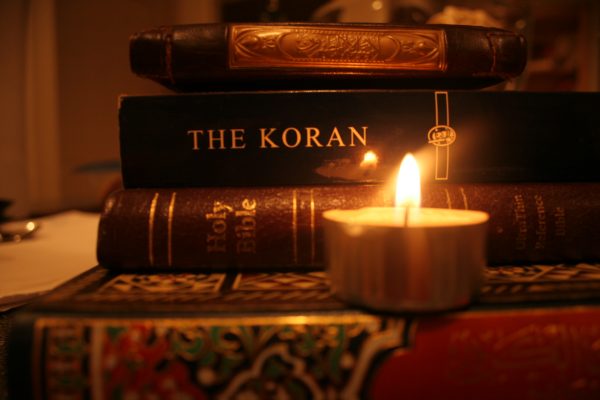Biography of Shaykh Sufi Abdullah Khan Al Naqshabandi

Shaykh Sufi Muhammad Abdullah Khan al Naqshabandi
During the 1950s and 1960s, the UK received a large migration of labour from the Indian sub-continent. There was an obligation for the many Muslims that arrived in Britain, to fulfil their religious and spiritual needs and to invite (dawah) the wider community to the message of Islam. As a means to address these needs, Hazrat Khwaja Zindapir Sahib, sent his first and most senior Khalifah (spiritual representative), Hazrat Sufi Muhammad Abdullah Khan to the UK in 1962.
Through the blessings of Allah, Most High and his Beloved Holy Prophet, peace be upon him, along with the spiritual blessings of Hazrat Khwaja Zindapir Sahib, Shaykh Sufi Abdullah established the largest centre of the Ghamkol Sharif branch of the Naqshabandi tariqah (sufi order) outside its headquarters in Kohat. In addition to which, there are now established many sub-centres in major towns and cities throughout the United Kingdom.
In 1996, under the guidance of Shaykh Sufi Abdullah, the largest mosque in Western Europe was completed, with a capacity to accommodate 5000 worshippers at any one time. Today, the mosque community firmly established at Poet’s Corner, Small Heath, Birmingham, remains a true testament of Shaykh Sufi Abdullah’s commitment, devotion and love for his Sufi Master in the mission he was assigned.
Sufi Abdullah was born in 1923 in the village of Behkri, district Chakwal, Pakistan. Upon completing his formal schooling, Sufi Abdullah entered the army in 1940. He served in the British Army during World War II, but was captured by the Germans and held as a prisoner of war for a number of years. After the war, Sufi Abdullah returned to Pakistan. He was very keen on reciting Naat Sharif, poetry praising Prophet Muhammad, peace be upon him, at religious gatherings held at the Unit mosque within the barracks. This is where he met Hazrat Khwaja Zindapir Sahib in 1945, whilst stationed in Abbottabad.
Sufi Abdullah took bay’at (vow of allegiance) a year later in 1946, at the hand of Hazrat Khwaja Zindapir Sahib. He became a disciple and continued to serve his shaykh whilst they were both in the army. When Zindapir Sahib returned from Hajj in 1952, and embarked upon his Hijrat to Kohat, Sufi Abdullah accompanied his shaykh on that historic journey. Sufi Abdullah spent much time at the Darbar during its early founding years and would regularly spend his entire leave from the army at Ghamkol Sharif. Sufi Abdullah naturally became a very close companion of Zindapir Sahib. Sufi Abdullah continued visiting the Darbar and serving his shaykh throughout the next 10 years.
Sufi Abdullah left the army in 1962, when it was decided by Zindapir Sahib to send him to the United Kingdom. Sufi Abdullah became overcome with self-doubt in how he would manage such an awesome task. Zindapir Sahib reassured him and stated that “Allah Almighty is with you”. Upon Sufi Abdullah’s departure for the UK, Zindapir Sahib conferred upon him the Khilafah (spiritual representation) of the Tariqah and gave him the following words of wisdom in 1962:
- To stay firm on the “aqeedah al tawheed” (belief in the oneness and supreme being of Allah Almighty).
- To always have at the forefront of your mind the “rahza” (pleasure) of Allah and His Beloved Prophet, peace be upon him, before embarking upon any task.
- To use your “il’m (knowledge) & aq’l” (intellect/sense) for the “rahza” (pleasure) of Allah Almighty as this results in attaining the “shaf’qat” (love, affection) of the Holy Prophet, peace be upon him.
- Do not undertake any task for your personal “iz’at” (honour) or that which leads to “be-iz’zatee” (dishonour/disgrace)
Once in Britain, Sufi Abdullah proceeded to Birmingham where he knew a few people with whom he had arranged to stay. He soon found employment and began on the mission his shaykh had assigned for him.

Shaykh Sufi Abdullah in the 1970’s
Sufi Abdullah discovered that most Muslims were not even aware of the direction of the Qibla (Mecca) in order to establish prayer. No Jumah (congregational) services were held on Friday, and the month of Ramadan passed by without people even being aware of its passing.
Soon, through the blessings of Allah Almighty, His Beloved Prophet, peace be upon him, and the spiritual blessings of his shaykh, Sufi Abdullah began to reach out and touch the hearts of those he encountered. A weekly zikr (meditation) circle, Jumah services, and monthly Giyarvee Sharif, were initiated. Sufi Abdullah acquired his own accommodation, a house in Durham Road, Sparkhill, and this became the venue for the tariqah’s gatherings. The tariqah began to gather momentum and the following increased to such a level that more space was needed. Sufi Abdullah went on his first Hajj in 1970 which was, by the blessings of Allah, the first of 27 he completed. Zindapir Sahib also attended that year, their first meeting since 1962.
In 1973 the Birmingham Central Mosque was built, from which time this venue was used for the tariqah’s annual events, the Milad Sharif (celebration marking the birthday of Prophet Muhammad, peace be upon him) and Urs Sharif (anniversary marking the passing of the founding Saint of Mohra Sharif). During 1973 the jaloos (procession) was introduced. This was the first Muslim jaloos in the history of the UK and it was led by Sufi Abdullah, despite being advised by members within the Muslim community that this practice may give rise to agitation against the marchers and subject them to physical and verbal abuse. However, Sufi Abdullah was not dissuaded and al hamdul Allah (God be praised) until this day there is not been a single incident since 1973. The jaloos involved marching through the streets of Birmingham reciting the zikr “la ilaha il Allah” (there is no deity besides God) an open and public declaration of faith. The jaloos became an integral part of the annual Milad and Urs Sharif celebrations.

 Shaykh Sufi Abdullah leading the Jaloos during the early and late 1970’s
Shaykh Sufi Abdullah leading the Jaloos during the early and late 1970’s
The tariqah was expanding rapidly with a number of new followers. Sufi Abdullah moved residences from Durham Road to Warwick Road, Sparkhill in 1975. The new premises were much larger and the ground floor reception rooms were converted into a mosque. This was to provide some relief to the need for space, but a similar pattern was developing and soon housing the increasing number of followers was again proving a challenge within a few years.
In 1983, Darul-Uloom Islamia Rizvia was established on Golden Hillock Road, Small Heath. A disused factory hall with four adjacent houses was purchased. The factory hall was converted into a mosque and was able to accommodate approximately 600-700 worshippers. During the mid 1980s, a number of projects aimed at the local community were launched in conjunction with Birmingham City Council. A purpose built community centre and an employment resource centre were established on the site. At this time a boarding facility for students from outside Birmingham, who were wishing to compliment their academic schooling with religious studies, in particular Hifz (memorising by heart) of the Holy Quran, was established.
At this time, with the expansion of activities on the site, there was a need to find car parking facilities for the newly constructed community centre. There was vacant land opposite the Dar-ul-Uloom Islamia Rizvia, which was occupied with 35 derelict houses. The management committee enquired to its status from Birmingham City Council and the Council responded by stating that if the land was purchased for the purpose of building a mosque then the Council would sell it at a third of its actual asking price. Sufi Abdullah requested that they be given a week to make a decision, and within the week the Council were taken up on their offer. On the 15th March 1992, during the holy month of Ramadan, work commenced on the construction of the Central Jamia Masjid Ghamkol Sharif, and the construction of the 3 storey mosque was completed in 1996.


Shaykh Sufi Abdullah participating in the construction of the masjid
with his Khalifas, Haji Mirza Talib and Haji Fazal Elahi.
The mosque represented a perfect and true testament of Sufi Abdullah’s commitment, devotion and love for his shaykh in fulfilling the task he was assigned. In parallel with the construction of the new mosque, the tariqah has established an impressive portfolio of projects within the community, a day care centre, printing press, Ghamkol Sharif Academy (in conjunction with City College), Right Start Foundation, Sure Start, Ghamkol Sharif House (sheltered accommodation for those with mental illnesses) and a Funeral Service.
Shaykh Sufi Muhammad Abdullah Khan al Naqshabandi has very successfully established the tariqah in the United Kingdom. He has devoted and committed his life in the service of Islam through his shaykh. Sufi Abdullah provides the perfect example of how a mureed (disciple) should relate with his shaykh, possessing and displaying the utmost respect, love, devotion and obedience towards Hazrat Khwaja Zindapir Sahib. Shaykh Sufi Abdullah stated, “my Hazrat Sahib is the true master of my every happiness and sorrow since taking bay’at in 1946”.

Shaykh Sufi Abdullah during the annual Urs celebration in Birmingham 2008
May Allah Almighty for the sake of his Beloved Prophet, peace be upon him, and Hazrat Khwaja Zindapir Sahib raise the maqam (spiritual station) of our Shaykh Sufi Muhammad Abdullah Khan al Naqshabandi and grant him a Heavenly abode well deserved after a life of service to his family, mureeds (students), Islam, the communities of Kohat, Pakistan and Birmingham, United Kingdom, and for his efforts towards opening and cultivating Divine Love in the hearts of everyone in our Human Family. Grant us the strength to follow his blessed example, to serve Allah Almighty and His Beloved Prophet Muhammad, peace be upon him. Ameen.


